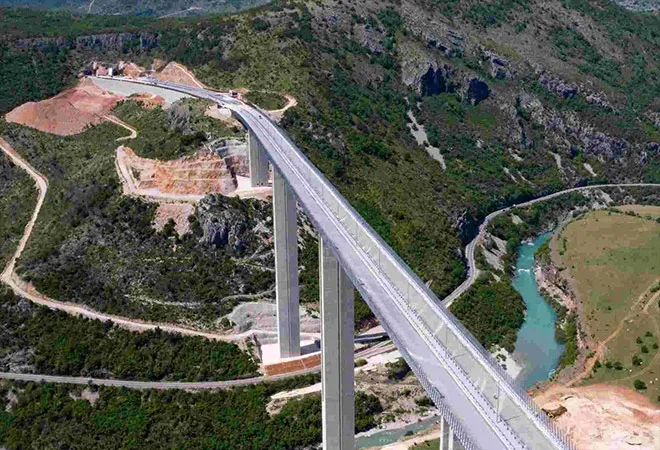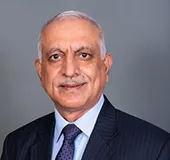
In July this year, total investments under China’s Belt and Road Initiative (BRI)
crossed a significant landmark of US$1 trillion. The
release of BRI data for the first half of 2023 was
accompanied by reports that the third BRI forum is being planned to be held in China at the end of 2023. With the stature of being the highest-level gathering of participating countries, the forum is meant to showcase a collaborative approach towards implementation of the BRI, in addition to highlighting progress made and changes planned in its overall direction. The next forum will be the first in the post-pandemic period, after a gap of nearly four-and-a-half years.
The road travelled
The BRI rapidly gained momentum after its launch in 2013 (initially launched under the title One Belt One Road, which was
changed to BRI in 2015 to stress collaboration and inclusivity). There was a sharp increase in the number of projects announced, total investments committed and executed, and the number of countries joining as partners (with the
current number at over 150). The geographical scope of BRI also expanded significantly, transforming it from a regional to a near-global initiative, in both of its components—the continental Silk Road Economic Belt, and the maritime Silk Road. China stressed that BRI was a new model for partnership, trade and integration that was free from hegemonic pressures and conditions. In the second half of its decade-old existence, China started to
highlight that the principles of multilateralism, environment and sustainability were embedded in the BRI. The importance of BRI for China has been such that it was
included in the Chinese Communist Party’s (CCP) constitution in 2017 and in China’s 14
th Five-Year Plan issued in 2021. Before the world was struck by the COVID-19 pandemic, the BRI appeared to be moving at a rapid pace, although numerous problems associated with it had already become evident.
With the stature of being the highest-level gathering of participating countries, the forum is meant to showcase a collaborative approach towards implementation of the BRI, in addition to highlighting progress made and changes planned in its overall direction.
Headwinds for BRI
The BRI faced criticism for its underlying objectives of gaining strategic influence through developmental footprint, leveraging assistance for basing and access rights, aggressively linking different regions with Sino-centric value chains, inadequate attention to local needs, lack of transparency, disregard for sovereignty, adverse environmental impact, corruption, and lack of sound financial oversight. In some cases, like the port project in Sri Lanka and the rail project in Kenya, the utilisation and revenues turned out to be well below the initial estimates. The term ‘debt diplomacy’ became popular in reference to the BRI after cases of high debt risk in some partner countries, including Pakistan, Laos, Sri Lanka, Zambia, and Mongolia, became increasingly evident. In some cases, China provided additional lending, while in others, it offered currency swap lines for debt restructuring. Notwithstanding,
negative perceptions about the BRI expanded slowly, with some partner countries becoming less enthusiastic about these projects, resulting in a changed stance.
New connectivity and infrastructure projects launched by the United States (US), the European Union (EU), the G7, Japan, Australia, India, and others took time to gain cohesion and substance, and have started to take concrete shape post-pandemic.
Partnership for Global Infrastructure and Investment (G7), the
Global Gateway (EU), the
Quality Infrastructure Investment Programme (Japan), and other such initiatives now offer alternatives to the BRI with different structures and processes. These and many linked initiatives have added to the challenges for the BRI, though their ability to rival the BRI in scale is yet to be established.
Before the world was struck by the COVID-19 pandemic, the BRI appeared to be moving at a rapid pace, although numerous problems associated with it had already become evident.
The recent
slowing down of the Chinese economy presents another key challenge to the BRI. In the face of high unemployment, a sticky consumer demand, lower trade and growth data, and concerns about the
financial health of some big companies, China is being forced to look inwards. This is also important from the point of view of the stated Chinese strategy of ‘dual circulation’, which links the domestic economy with external trade and investment.
In the initial phase, China
funded overseas projects under BRI through its policy banks, the China Development Bank, the Export-Import Bank of China, and specialised investment funds having the participation of public and private financing institutions. It adopted a new model of leveraging its foreign exchange reserves (currently at about US$3.2 trillion) to capitalise its state banks and sovereign funds. It
subsequently diversified into other financing channels that include equity investment funds, sovereign development funds, private equity (PE) funds, and joint (with local investors) investment funds. As of October 2020, more than
70 percent of commitments undertaken by the Silk Road Fund were in the form of equity, with a medium- to long-term investment horizon akin to a PE firm. The capacity of many of these channels is linked with sustained economic growth and the overall health of the financial and banking sector. With very high levels of debt—some
estimates suggest that the overall debt of China has crossed 300 percent of GDP—and new reports of bad loans, the BRI investments are likely to see increased scrutiny and lower risk appetite.
The BRI Forum
The
Belt and Road Forum for International Cooperation (BRF) was started by China as a platform for collaboration and networking that would periodically review the broad direction of the BRI, finalise its action agenda, and announce new frameworks and agreements. The
first BRF was held in May 2017, and was attended by 29 heads of state, delegates from 30 countries, and representatives from 70 international organisations. The focus was to showcase cooperation and consultation. The Chinese President announced that China would allocate more resources and financial support, and several new agreements and projects were unveiled. The UN Secretary-General, addressing the first forum,
praised the BRI as “rooted in a shared vision for global development” and linked it with the UN Sustainable Development Goals 2030. By all accounts, the first BRF was highly successful.
In the face of high unemployment, a sticky consumer demand, lower trade and growth data, and concerns about the financial health of some big companies, China is being forced to look inwards.
The
second BRF was held in April 2019 and attended by 37 heads of state, a higher number than the first BRF. However, the geopolitical environment had changed significantly, with the US having
labelled China as a “revisionist power” and the EU having
labelled it as a “systemic rival”. The trade and tariff friction between the US and China had started to evolve, and criticism of BRI projects—including on aspects related to financial terms, debt, local participation, and adverse environmental impacts—had started to grow. Accordingly, the second BRF
emphasised consultative mechanisms, high quality and environmental standards, clean and green projects, and improved financial management. A debt sustainability framework, zero tolerance for corruption, and several documents outlining some key principles and deliverables were released. In addition to keeping up the momentum, the focus was also on image makeovers in response to various criticisms. China
conveyed that the BRI was adaptive, and the broader assessments in different countries concluded that the BRI was here to stay for a long time.
The Third BRI Forum amid a critical phase
The geopolitical and geo-economic shifts between the first two BRFs pale in comparison to those between the second and the anticipated third BRF. With the downward spiral in US-China ties and the unfolding strategic competition, the deterioration in the security environment, the precarious global trade and economic situation, the emergence of new partnerships and alliances, the focus on resilience related to technology and supply chains, and the new emphasis on ‘trust’, the third BRF faces a formidable challenge to reposition the BRI. The BRI itself has been facing some major headwinds, which have been exacerbated by China’s domestic economic problems. As
60 percent of China’s loans are in countries facing debt distress, there may be increased demands for waivers or restructuring at the forum.
The trade and tariff friction between the US and China had started to evolve, and criticism of BRI projects—including on aspects related to financial terms, debt, local participation, and adverse environmental impacts—had started to grow.
Given the new environment and re-evaluation by some partner countries, the participation—both in level and numbers—in the third BRF will be keenly watched. This will be a key input for China to schedule and conduct the event and to emphasise that the BRI continues to retain its appeal and enjoys widespread support, despite numerous challenges.
For China, the BRI is too important to be allowed to move lower in its national priority. Some trimming of the number of projects and amount of investment is likely, and China may take up smaller projects overseas with enhanced scrutiny and oversight. China must, however, showcase the BRI as a success story whose continuation is in the interest of the entire global community. The third BRF will thus go ahead only if China is confident of a successful event and is able to put forward a plan and narrative that displays its resolve and ability to deal with some major headwinds at a very crucial juncture.
Vice Admiral Girish Luthra is Distinguished Fellow at the Observer Research Foundation
The views expressed above belong to the author(s). ORF research and analyses now available on Telegram! Click here to access our curated content — blogs, longforms and interviews.



 In July this year, total investments under China’s Belt and Road Initiative (BRI)
In July this year, total investments under China’s Belt and Road Initiative (BRI)  PREV
PREV


